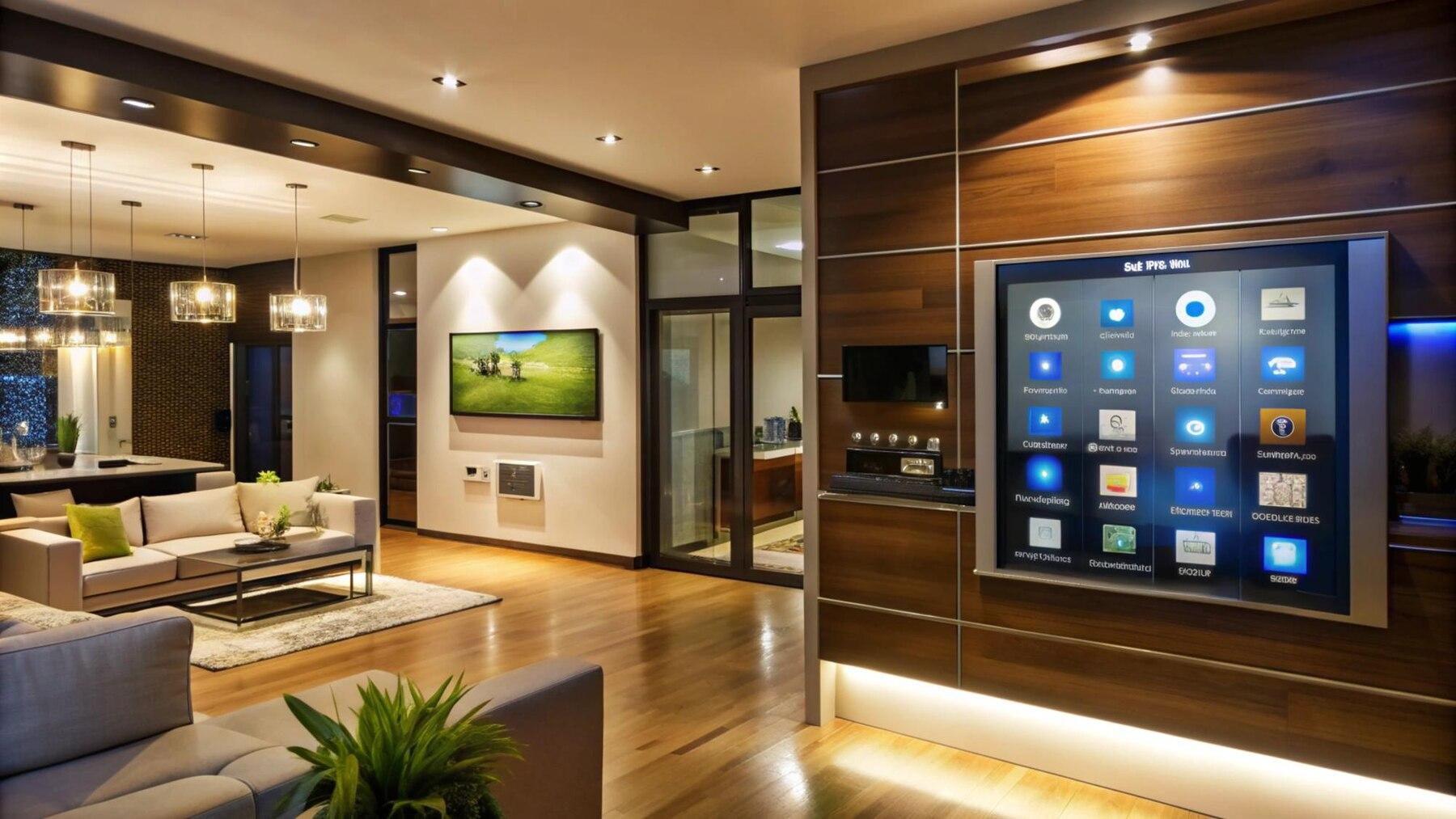Home automation technology is revolutionizing the way people interact with their living spaces. With the rise of smart devices, artificial intelligence, and IoT (Internet of Things), modern homes are becoming more convenient, secure, and energy-efficient. This article explores how home automation technology is reshaping modern living, its key benefits, challenges, and future trends.
1. Understanding Home Automation Technology

Home automation refers to the integration of smart devices and systems that automate household tasks. These systems can be controlled remotely using smartphones, voice commands, or AI-driven automation.
Key Components of Home Automation
- Smart Lighting: Automated lighting systems that adjust brightness, color, and schedules.
- Smart Thermostats: AI-powered thermostats that optimize temperature settings for energy efficiency.
- Security Systems: Smart locks, cameras, and motion sensors that enhance home security.
- Smart Appliances: Refrigerators, washing machines, and kitchen gadgets that offer remote control and automation.
- Voice Assistants: AI-based assistants like Amazon Alexa, Google Assistant, and Apple Siri that allow hands-free control.
2. Benefits of Home Automation Technology
The integration of smart home technology provides numerous advantages that enhance modern living.
A. Convenience and Comfort
- Automated systems allow homeowners to control devices remotely from their smartphones.
- Voice-activated assistants provide hands-free operation for added convenience.
- Personalized settings adapt to individual preferences, such as preferred lighting and room temperature.
B. Energy Efficiency and Cost Savings
- Smart thermostats optimize heating and cooling, reducing energy bills.
- Automated lighting ensures lights are turned off when not in use, saving electricity.
- Smart appliances operate more efficiently, reducing overall energy consumption.
C. Enhanced Home Security
- Smart cameras provide real-time surveillance and motion detection alerts.
- Smart locks allow remote access control and keyless entry.
- AI-driven security systems can detect unusual activity and notify homeowners instantly.
D. Health and Wellness Benefits
- Air quality monitors track pollution levels and adjust ventilation systems accordingly.
- Smart mattresses and sleep trackers help improve sleep quality.
- Automated reminders for medication and hydration promote healthier lifestyles.
E. Remote Monitoring and Control
- Homeowners can monitor and manage their homes from anywhere in the world.
- Smart home apps provide real-time updates on energy consumption and security status.
3. Challenges of Home Automation Technology

Despite its numerous advantages, home automation comes with a few challenges.
A. High Initial Costs
- Smart home devices and automation systems can be expensive to install.
- Upgrading older homes with automation technology may require additional infrastructure.
B. Data Privacy and Security Risks
- IoT devices collect vast amounts of personal data, raising privacy concerns.
- Cybersecurity threats, such as hacking, can compromise smart home security.
C. Compatibility Issues
- Different smart devices may not always be compatible with each other.
- Standardization across platforms is still a work in progress.
D. Dependence on Internet Connectivity
- Most smart home systems require a stable internet connection to function effectively.
- Internet outages can temporarily disrupt automation features.
4. The Future of Home Automation Technology

The evolution of home automation is rapidly advancing, with new trends shaping the future of smart living.
A. AI and Machine Learning Integration
- AI-powered home assistants will become more intuitive and personalized.
- Machine learning algorithms will enhance automation by predicting user preferences.
B. Expansion of 5G and IoT Devices
- Faster internet speeds with 5G will improve smart device performance.
- Increased IoT connectivity will lead to more seamless home automation.
C. Sustainable and Green Smart Homes
- Solar-powered smart homes will reduce reliance on traditional energy sources.
- Smart water management systems will optimize water usage and conservation.
D. Voice and Gesture Control Enhancements
- More advanced voice recognition and gesture control technologies will improve user experience.
- Touchless home automation will become more prevalent in post-pandemic living.
Also Read : How Home Automation Technology Is Transforming Modern Living
Conclusion
Home automation technology is transforming modern living by enhancing convenience, security, and energy efficiency. As AI, IoT, and 5G technology continue to evolve, smart homes will become even more advanced and integrated. While challenges such as privacy concerns and compatibility issues exist, the future of home automation promises a smarter, safer, and more sustainable way of living.
FAQs
1. What is home automation technology?
Home automation technology refers to smart devices and systems that automate household tasks and can be controlled remotely or through AI-driven automation.
2. How does home automation improve security?
Smart security cameras, motion sensors, and smart locks provide real-time monitoring and remote access control, enhancing home security.
3. Are smart homes energy-efficient?
Yes, smart homes use AI-powered thermostats, automated lighting, and energy-efficient appliances to optimize energy consumption and reduce costs.
4. What are the main challenges of home automation?
Challenges include high initial costs, data privacy concerns, compatibility issues, and dependence on internet connectivity.
5. What is the future of home automation?
The future includes AI-driven automation, 5G connectivity, sustainable smart homes, and advanced voice and gesture control technologies.

